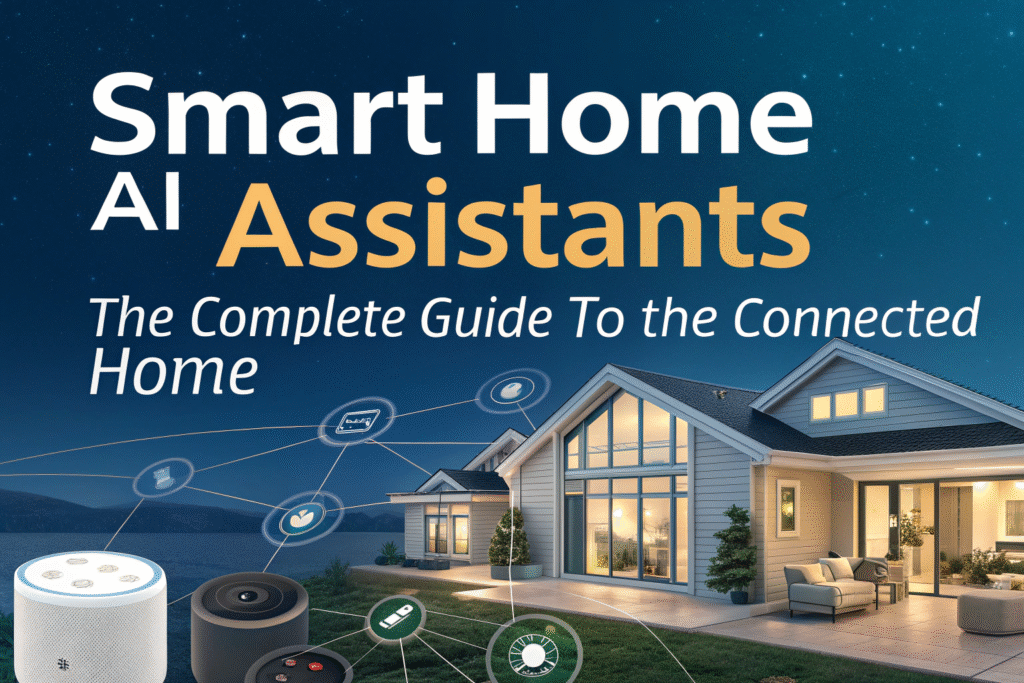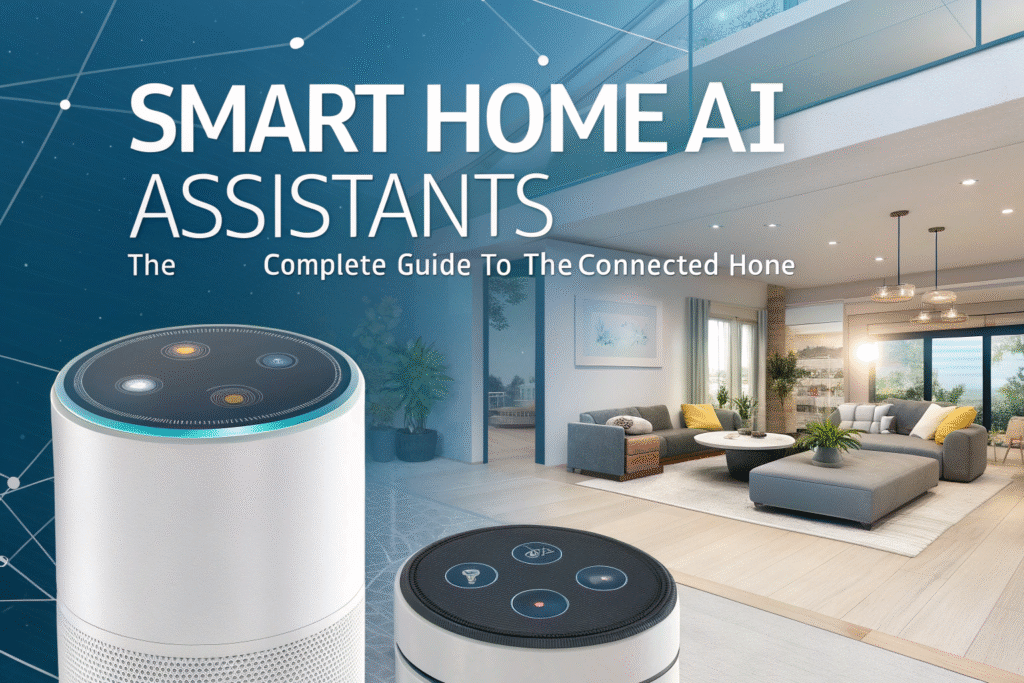
“Hey Google, turn off the lights.” “Alexa, what’s the weather?” These commands are daily habits for millions. Smart home AI assistants have shifted from novelties to central hubs of connected living. They are reshaping how we interact with our homes and opening new opportunities for entrepreneurs, marketers, and creators.
Introduction: The Voice-Activated Revolution
Gone are the days of fumbling for switches or remotes. Smart home AI assistants like Alexa, Google Assistant, and Siri bring convenience through voice control. These systems act as the smart home’s brain, connecting and managing devices like thermostats, lights, cameras, and appliances.
History & Evolution: From Clunky to Conversational
The journey to today’s sophisticated assistants has been marked by rapid innovation.
- The Pre-Voice Era (Early 2000s): Home automation existed but was often complex, expensive, and required professional installation. Systems were controlled via proprietary remotes or keypads.
- The Breakthrough (2014): Amazon’s surprise launch of the Echo and its AI assistant, Alexa, was a watershed moment. It brought voice control to the masses with a simple, affordable device.
- The Platform Wars (2015-Present): Google quickly responded with Google Assistant and Google Home. Apple joined with HomePod and Siri integration. This competition fueled a rapid expansion of features, improved natural language processing, and a massive growth in compatible “Works with Alexa/Google” devices.
- The Present Day: Today’s assistants are more conversational, proactive, and integrated, capable of handling complex routines and providing contextual information.
Audience & Demographics: Who’s Using Smart Assistants?
The user base for smart home AI assistants is broad and continues to diversify.
- Early Adopters & Tech Enthusiasts: This group was the first to embrace the technology, often building extensive, integrated smart home systems.
- Families and Busy Professionals: These users leverage assistants for convenience—setting timers, managing shopping lists, controlling entertainment, and keeping families organized with shared calendars.
- Aging Populations and Individuals with Accessibility Needs: Voice control offers significant benefits for those with mobility or visual impairments, providing greater independence.
- Brands and Marketers: This group sees the assistant ecosystem as a new channel for customer engagement through voice search optimization, custom “skills,” and actionable insights into user behavior.
Key Features & Functions: More Than Just a Speaker
Modern smart home AI assistants are packed with capabilities that extend far beyond playing music.
Voice Control and Automation
This is the core function. Users can control thousands of compatible smart devices using natural language commands. Furthermore, they can create “routines”—automated sequences triggered by a single phrase (e.g., “Good morning” turns on lights, reads the news, and starts the coffee maker).
Information and Query Handling
Assistants act as a gateway to the internet’s knowledge, providing weather updates, news briefings, sports scores, and answers to general questions.
Media and Entertainment Hub
They are central to home entertainment, capable of streaming music from various services, controlling TVs, and even narrating audiobooks.
Communication and Connectivity
Features like drop-in, announcements, and voice/video calling turn assistants into an intercom system for the home.
Skills and Actions (The App Store for Voice)
Just like smartphones have apps, assistants have “Skills” (Alexa) or “Actions” (Google) that third-party developers can create to extend functionality, from ordering a pizza to guiding a workout.
Business & Marketing Potential: The Voice-First Opportunity
For businesses, the rise of smart home AI assistants opens up a new frontier for customer interaction.
- Voice Search Optimization (VSO): As more searches happen by voice, optimizing content for conversational, long-tail keywords becomes critical for visibility.
- Branded Voice Apps/Skills: Companies can create custom skills, like a recipe tool for food brands or a tracking tool for logistics, giving customers a direct voice channel.
- Proximity-Based Marketing: Devices like Echo Auto can deliver location-based alerts and promotions when users approach a store.
- Valuable Consumer Insights: Anonymized voice command data uncovers search trends and customer intent, helping shape broader marketing strategies.
Best Practices & Tips for Engagement
To effectively engage with users through this channel, consider these strategies:
- Focus on Utility and Frictionless Experience: The best voice apps solve a specific problem quickly. Avoid complex menus; the interaction should be simple and fast.
- Design for a Conversational UI: Writing for voice is different from writing for the web. Use natural, conversational language and anticipate how users might phrase requests.
- Promote Your Voice Skill: Just like a mobile app, you need to market your voice skill through your website, social media, and email lists to drive adoption.
- Prioritize User Privacy: Be transparent about data collection and usage. Building trust is essential in a device that is always listening for its wake word.

Challenges & Limitations
Despite their potential, smart home AI assistants face significant hurdles.
- Privacy and Security Concerns: The “always-listening” nature of these devices raises valid questions about data collection, storage, and potential eavesdropping.
- Interoperability and Fragmentation: Competing platforms like Amazon, Google, and Apple limit compatibility, creating a fragmented smart home experience.
- Limited Monetization: Voice apps offer few direct revenue streams, serving mainly as brand-building and utility tools.
- Contextual Understanding Limits: While improving, assistants can still struggle with complex, multi-step requests or understanding context from previous conversations.
Future Outlook: The Ambient and Predictive Home
The next generation of **
<Streaming stoppped because the conversation grew too long for this model>